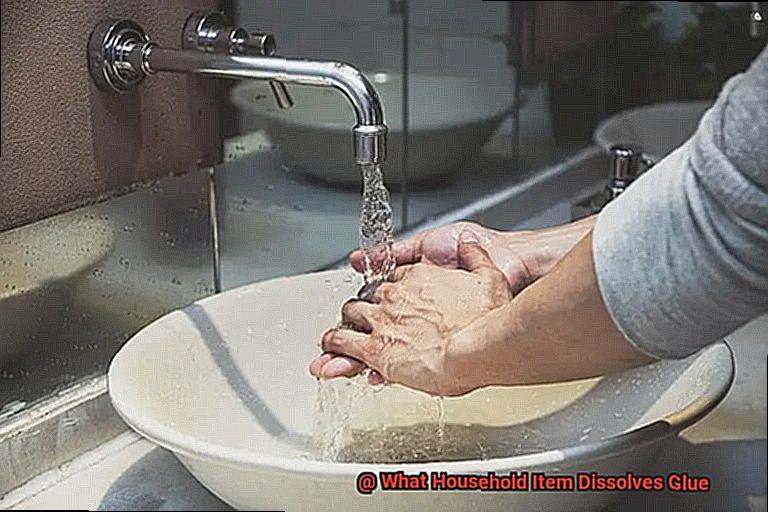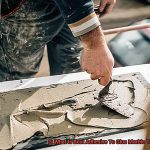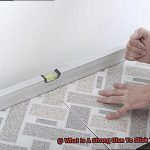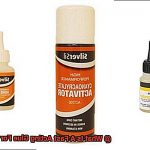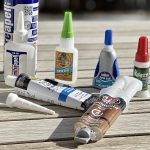Ever been stuck in a sticky situation, desperately trying to scrape off stubborn glue from various surfaces? Well, fear not. Today, we’re diving into the enchanting world of household secrets to unveil the captivating tale of a miraculous item that effortlessly dissolves glue.
Picture this: your beloved vase accidentally shatters into a million pieces. As you painstakingly attempt to piece it back together, those pesky adhesive remnants put up a fierce fight. Or maybe you got a little too crafty and now find yourself with glue-covered fingers that just won’t let go. In these moments, finding something to dissolve glue becomes an urgent mission.
But hidden away behind closed cabinet doors lies an unsung hero, patiently waiting for its moment in the spotlight – acetone. Yes, you heard it right – this unassuming household item has been silently battling against glue for ages.
Acetone, commonly found in nail polish removers, is a powerful solvent capable of breaking down even the most stubborn adhesives. Its unique chemical makeup effortlessly attacks and loosens the grip of hardened glue, making it a breeze to wipe away. And guess what? You don’t even need to rush out and buy a new bottle; chances are you already have some nail polish remover tucked away in your beauty stash.
But how does acetone work its magic? Stay tuned as we dive deeper into the science behind this extraordinary solvent. From unraveling molecular interactions to exploring safe household usage, we’ll leave no stone unturned in our quest to unlock the secrets of this glue-dissolving household gem.
Get ready to witness the sheer power of acetone as we embark on an enchanted journey of dissolution. Say goodbye to sticky situations forever and watch as your favorite items are restored to their former glory.
Acetone: Overview and Benefits
Contents
- 1 Acetone: Overview and Benefits
- 2 Rubbing Alcohol: Overview and Benefits
- 3 Vinegar: Overview and Benefits
- 4 Vegetable Oil: Overview and Benefits
- 5 Warm Soapy Water: Overview and Benefits
- 6 Other Household Items That Dissolve Glue
- 7 Tips for Using Household Items to Dissolve Glue
- 8 Safety Precautions When Using Household Items to Dissolve Glue
- 9 Conclusion
When it comes to tackling stubborn glue residues, acetone emerges as a powerful and versatile household hero. Craft enthusiasts and sticky situations alike can rely on this colorless liquid with a distinct odor to save the day. In this article, we will delve into the captivating overview and awe-inspiring benefits of acetone as a glue dissolver, exploring its lightning-fast action, remarkable versatility, easy accessibility, and essential safety precautions.
Overview of Acetone:
Acetone, commonly found in nail polish removers and paint thinners, possesses remarkable abilities to break down the chemical bonds of adhesive substances. This characteristic makes it an exceptional choice for removing glue from surfaces of all kinds. With acetone by your side, quick and efficient resolution of glue mishaps is just a step away.
Benefits of Using Acetone as a Glue Dissolver:
Fast-Acting Powerhouse:
Acetone’s true prowess lies in its ability to swiftly penetrate adhesives and dissolve their bonding properties. Glass, metal, plastic, fabric – no surface stands a chance against acetone’s rapid action. Bid farewell to the frustration of ceaseless scraping and welcome the ease of glue removal.
Versatility Unleashed:
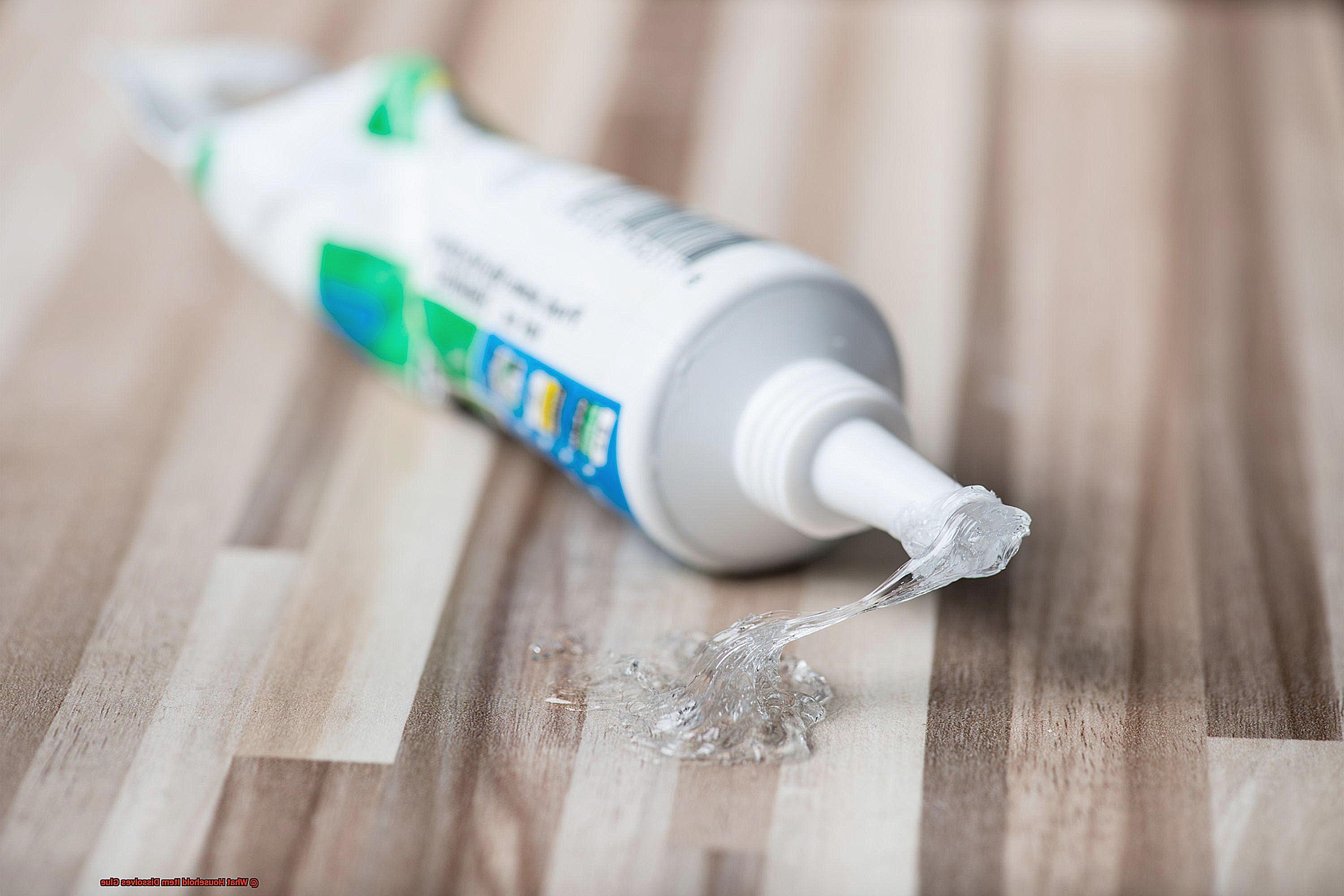
Acetone boasts a versatility that knows no bounds. Whether grappling with super glue, epoxy glue, or even industrial-strength adhesives, acetone rises to the challenge. Its unrivaled effectiveness across various types of glues has made it the go-to solution for both DIY enthusiasts and seasoned professionals.
Availability and Affordability:
Finding acetone is as effortless as its application. A trip to the nearest drugstore or supermarket reveals acetone shining brightly in nail polish remover aisles. Moreover, its efficiency means that only a small amount of acetone is needed to dissolve glue, stretching the lifespan of a single bottle and making it a wallet-friendly choice.
Safety Precautions:
While acetone is generally safe for most surfaces, exercising caution is crucial to prevent potential damage or discoloration. Prior to applying acetone to larger areas, perform a patch test on an inconspicuous spot, especially when working with delicate fabrics or painted surfaces. Working in a well-ventilated area and avoiding skin contact is essential due to acetone’s high flammability and potential for skin irritation.
Rubbing Alcohol: Overview and Benefits
In the realm of household essentials, there exists an unsung hero that possesses extraordinary powers – rubbing alcohol. Often overshadowed by its glue-dissolving reputation, this versatile product offers a multitude of benefits and uses. Prepare to be amazed as we delve into the wonders of this everyday item.
The Basics: Unveiling the Elixir
Prepare to meet isopropyl alcohol, or rubbing alcohol for short. With its clear liquid form and potent aroma, it is crafted by blending water and propylene, boasting an impressive alcohol content ranging from 70% to 90%. Discover its omnipresence in medicine cabinets and first aid kits.
Antiseptic Superstar: A Protector in Disguise
Beyond its prowess in dissolving glue, rubbing alcohol truly shines as an antiseptic powerhouse. Its high alcoholic potency renders it a formidable bacteria annihilator and wound disinfectant. Make it a staple in your first aid kit, ensuring pristine cleanliness for medical instruments like thermometers and tweezers.
Stain-Busting Expertise: Vanquishing the Inky Menace
Bid farewell to stubborn ink stains plaguing your clothes or furniture. Rubbing alcohol emerges as the ultimate savior, breaking down ink molecules with ease and eliminating stains effortlessly. Moreover, it proves invaluable in banishing the sticky residue left behind by labels or tape on surfaces.
Beauty and Skincare Marvel: Unveiling Your Radiant Potential
The beauty and skincare industry stands in awe as rubbing alcohol reveals its true potential. Embrace it as a toner, purifying and tightening pores to thwart the relentless assault of acne breakouts. Furthermore, let it serve as a trusted disinfectant for your cherished makeup brushes or as a mighty spot treatment, combating blemishes with unwavering resolve.
Household Cleaning Sidekick: A Gleaming Ally
Rubbing alcohol’s talents extend far beyond its reputation as a stain remover extraordinaire. Witness its brilliance in household cleaning endeavors, guaranteeing spotless glass surfaces devoid of streaks. Its rapid evaporation and residue-free nature make it an ideal candidate for sanitizing electronic devices such as smartphones and computer keyboards.
Vinegar: Overview and Benefits
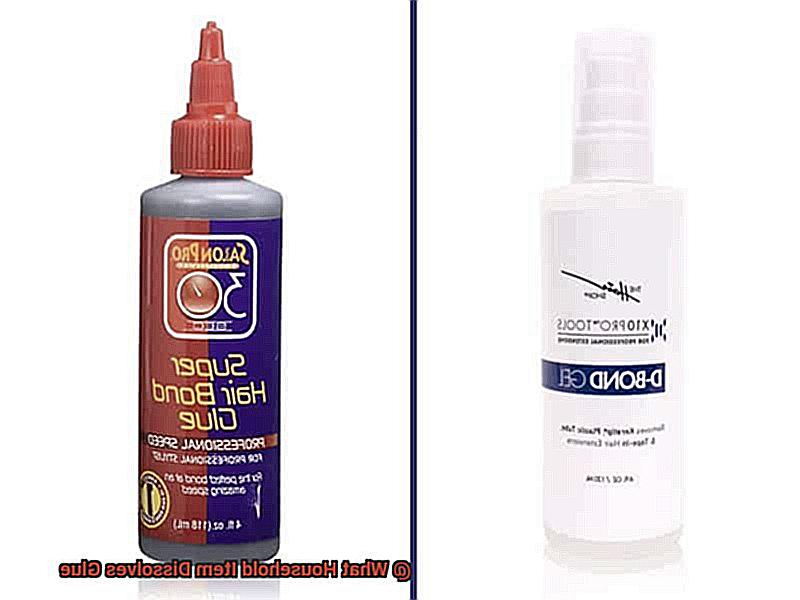
Prepare to be captivated by the unsung hero of household essentials – vinegar. This versatile elixir has been a trusted companion for centuries, serving as a cleaning agent, a culinary superstar, and even a potential health booster. So, put on your apron and grab a sponge, because we’re about to delve into the fascinating world of vinegar.
Let’s start with the basics. Vinegar is created through the magical process of fermentation, where acetic acid bacteria transform ethanol into a liquid wonder. It can be derived from a variety of sources, including fruits like apples, grapes, or berries, as well as grains, beer, or wine. But enough with the science lesson – let’s uncover the extraordinary uses and benefits of this everyday miracle.
First and foremost, vinegar possesses an incredible power – the ability to dissolve glue. Whether you’ve experienced a sticky mishap or are struggling to remove residue from a stubborn sticker, vinegar is here to save the day.
Harnessing the might of its acetic acid content, vinegar acts as a solvent, effortlessly breaking down the chemical bonds in glue. Simply soak the affected area in vinegar or apply it directly with a cloth or sponge, and witness as the glue dissolves like magic before your eyes.
But wait, there’s more. Vinegar is not just a one-trick wonder. It also reigns supreme as a natural cleaner and disinfectant. Armed with its antimicrobial properties, vinegar fearlessly tackles those challenging cleaning tasks around the house. From countertops to windows, floors to bathroom fixtures, vinegar effortlessly banishes dirt and grime.
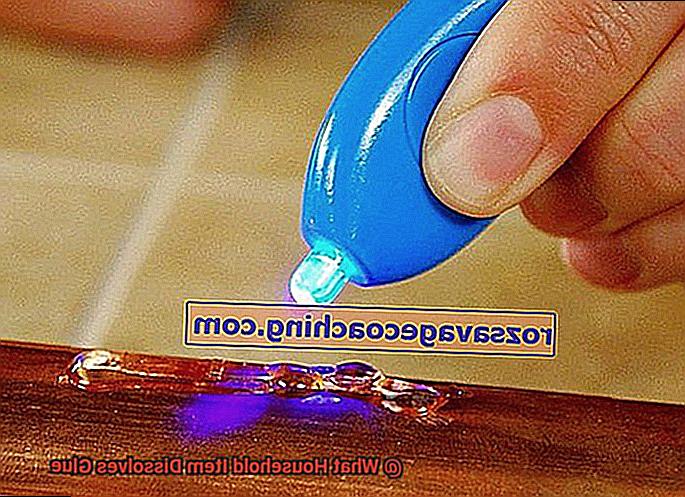
And that’s not all – it’s also an expert stain remover, capable of vanquishing even the most stubborn coffee or wine spills on fabric or carpet. Talk about an impressive multitasker.
Now let’s venture into the realm of epicurean delights. Vinegar isn’t just a cleaning agent; it’s a culinary superstar. With its ability to add flavor and acidity to dishes, vinegar becomes an indispensable ingredient in your kitchen arsenal. Whether you’re using it as a marinade, a key player in salad dressings, or even in baking, vinegar brings a tangy punch that elevates your culinary creations.
And here’s an interesting twist – some culinary enthusiasts swear by vinegar as a secret weapon for preserving fruits and vegetables, ensuring their freshness for extended periods of time. Who knew vinegar had such versatility in the kitchen?
Vegetable Oil: Overview and Benefits
Today, we embark on an extraordinary journey into the captivating realm of vegetable oil. Prepare to be amazed as we unveil the hidden talents of this household hero – its unparalleled ability to dissolve glue with ease. Imagine a world where adhesive mishaps are no match for the mighty vegetable oil. Join us as we explore the comprehensive overview and myriad benefits of this versatile elixir, destined to revolutionize your glue-related woes.
Overview:
For centuries, vegetable oil has been a trusted companion in kitchens and beyond. Derived from plants like soybeans, corn, and sunflowers, this liquid gold has now emerged as a formidable force in the battle against stubborn glue. Its versatility knows no bounds, making it equally effective in cooking, skincare, and other applications. Brace yourselves for a thrilling adventure through the vast potential of vegetable oil.
Benefits of Using Vegetable Oil to Dissolve Glue:
Gentle and Non-Toxic Marvel:
Bid farewell to harmful chemical solvents that pose risks to your well-being. Vegetable oil is nature’s gift, boasting a gentle and non-toxic nature. It can be safely used around children and pets, alleviating any concerns about accidental ingestion or inhalation. Let your worries evaporate as you embrace the safe and natural alternative for glue removal.
Affordability Meets Accessibility:
Rejoice, for most households already possess the magic elixir that is vegetable oil. No need to embark on a frantic quest to find specialized adhesive removers or break the bank with expensive solutions. With vegetable oil readily available in your kitchen cupboard, you can conquer glue mishaps without breaking a sweat or your budget.
Mighty Adhesive Breakdown:
Prepare to witness the awe-inspiring powers of vegetable oil at work. Its oily consistency stealthily infiltrates the structure of various glues, weakening their hold on surfaces. This remarkable feat enables easy removal without leaving a trace or causing damage underneath. Bid adieu to sticky messes and welcome a world of pristine surfaces with open arms.
How to Use Vegetable Oil for Glue Removal:
Apply and Let the Marvel Unfold:
Unleash the power of vegetable oil by generously applying it directly onto the glue-covered area. Allow it to work its enchantment for a few minutes, as it gracefully penetrates the adhesive, preparing it for imminent defeat.
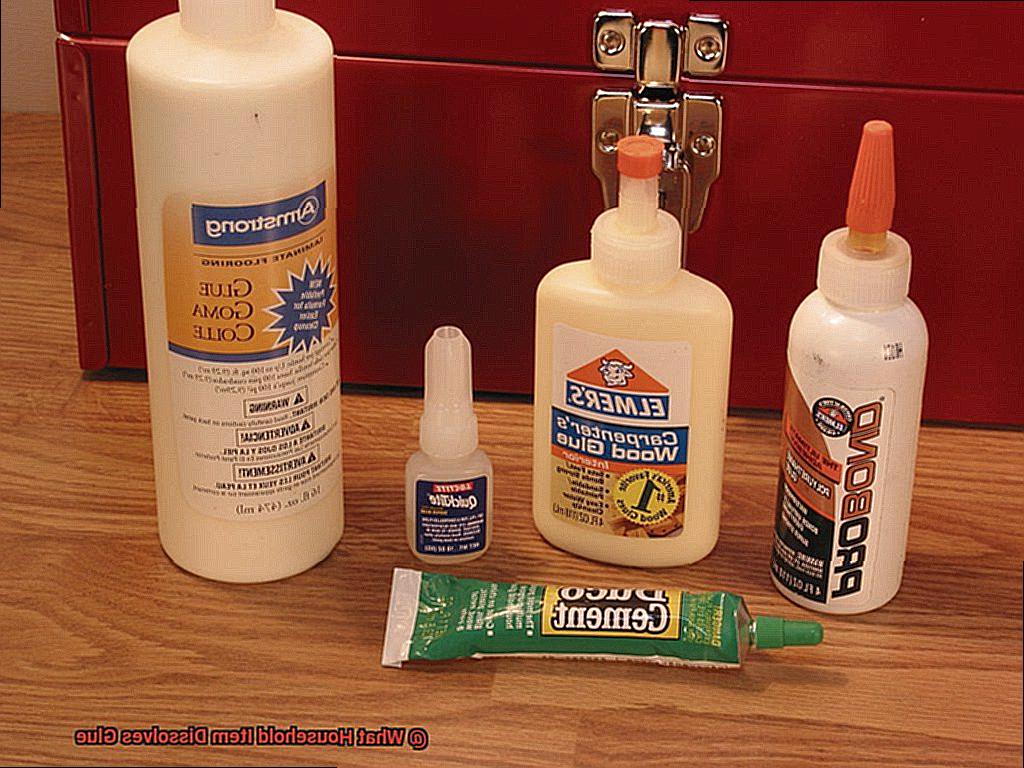
Warm Soapy Water: Overview and Benefits
Glue mishaps can be a sticky situation, but fear not. The secret weapon to dissolve glue is none other than warm soapy water. This versatile household item is a superhero in disguise, capable of breaking down various types of glue. In this article, we will explore the overview and benefits of using warm soapy water for adhesive removal, providing you with the ultimate solution to tackle any sticky situation.
The Power of Warm Soapy Water:
Don’t underestimate the power of warm soapy water. When warm water and soap combine forces, they create a potent solvent that breaks down the bonds of glue. It’s like a magical elixir that can tackle even the toughest adhesive challenges.
Benefits Galore:
Using warm soapy water for glue removal offers a plethora of benefits that will leave you amazed. Firstly, it is a safe and non-toxic method, eliminating the need for harsh chemicals that can harm both your health and the environment. With warm soapy water, you can breathe easy knowing you’re using a gentle solution. Additionally, its gentle nature ensures that surfaces are protected from damage or discoloration.
Simple Steps:
Using warm soapy water is as easy as 1-2-Begin by creating a mixture of warm water and dish soap in a container. Make sure the water is comfortably warm, not scalding hot. Stir the mixture until the soap is fully dissolved.
Next, apply the miraculous solution directly to the glue stain or residue. Armed with a sponge or cloth, gently scrub the area, allowing the warm soapy water to penetrate and loosen the adhesive. Patience is key here as some glues may require more time to dissolve. Keep scrubbing until you witness the glue breaking down.
Rinse and Repeat:
Once the glue has surrendered to the power of warm soapy water, it’s time to bid farewell to any remnants. Rinse the area thoroughly with clean water, ensuring that all traces of glue are washed away. Dry the surface using a clean towel or let it air dry. For stubborn or dried-on glue, don’t hesitate to repeat the process as needed.
Other Household Items That Dissolve Glue
We’ve all faced the frustrating challenge of removing glue without causing damage. While warm soapy water is a trusty ally, there are other household items that possess the power to dissolve glue effectively. In this article, we will delve into these enchanting solutions that can be easily found in most homes. Get ready to bid farewell to sticky situations.
Vinegar: The Mighty Acidic Wonder
Vinegar, the versatile pantry staple, not only excels in cooking and cleaning but also triumphs in dissolving glue. Through its mild acid properties, vinegar breaks down adhesive bonds effortlessly. Soak a cloth in vinegar and apply it to the glued area. After a few minutes, gently rub away the dissolved glue – witness the magic.
Rubbing Alcohol: The Solvent Superhero
Behold rubbing alcohol, armed with isopropyl alcohol as its secret weapon against glue. This solvent dismantles adhesive properties swiftly and effectively. Apply a small amount of rubbing alcohol to a cloth or cotton ball and gently rub the glued surface until the glue surrenders to its power. Remember, moderation is key.
Acetone (Nail Polish Remover): The Resolute Rescuer
When it comes to formidable adhesives like super glue, acetone emerges as the ultimate savior. Found in nail polish remover, acetone possesses unparalleled strength in dissolving strong glues. Proceed with caution, as acetone can potentially damage certain surfaces. Test it on a small, inconspicuous area before unleashing its power.
Cooking Oils: Kitchen’s Secret Allies
Unleash the hidden powers of vegetable oil or olive oil from your kitchen cupboard to dissolve glue effortlessly. These cooking oils work wonders in breaking down adhesive bonds. Apply a generous amount of oil to the glued area and let it sit for a few minutes. Wipe away the oil and dissolved glue with a clean cloth – as easy as pie.
Tips for Using Household Items to Dissolve Glue
We’ve all faced the frustration of trying to remove stubborn glue from surfaces. But fear not. There are household items that can come to the rescue and dissolve that adhesive. In this article, we’ll explore five different household items that are effective in dissolving glue, along with some precautions to ensure safe usage.
Acetone: The Super Solvent
Acetone, commonly found in nail polish remover, is a powerful tool for dissolving glue. It works wonders on super glue or nail glue. To use acetone, grab a cotton ball or cloth and gently rub it onto the glued area. After letting it sit for a few minutes to soften the glue, wipe it away. Remember to work in a well-ventilated area and protect your skin from irritation.
Vinegar: The Acidic Ally
Not only a kitchen staple, vinegar is also an effective glue dissolver for certain types of adhesive like white craft or school glue. Soak a cloth or sponge in vinegar and apply it to the glued area. Let the vinegar penetrate the glue for a few minutes before gently scrubbing the area with a soft brush or cloth. Rinse with water to remove any residue.
Rubbing Alcohol: The Adhesive Assassin
Rubbing alcohol, also known as isopropyl alcohol, is another excellent solvent for dissolving glue, particularly epoxy or super glue. Soak a cloth or cotton ball in rubbing alcohol and apply it to the glued surface. Gently rub the area until the glue starts to dissolve. Repeat if needed.
Cooking Oil: The Natural Ninja
Believe it or not, cooking oils like vegetable oil or olive oil can help dissolve certain types of adhesive. Apply a generous amount of oil onto the glued area and let it sit for a few minutes. The oil will penetrate the adhesive, making it easier to remove. Gently scrub away the softened glue with a cloth or sponge.
Warm Soapy Water: The Gentle Giant
For water-based glues, warm soapy water can be an effective solution. Create a mixture of warm water and dish soap, and soak the glued area for a few minutes. Use a cloth or sponge to gently scrub the glue until it starts to loosen. Rinse with clean water to remove any residue.
Safety Precautions When Using Household Items to Dissolve Glue
Before you dive into the battle, it’s crucial to prioritize safety to ensure a successful mission without any mishaps. Let’s explore the essential safety precautions you should consider when using household items to dissolve glue.
Read and Follow Instructions:
Before unleashing your chosen household hero, take a moment to read and carefully follow the instructions provided on the product label or packaging. Each household item may have specific usage guidelines or precautions that are vital for safe and effective use.
Protect Yourself:
Shield yourself from potential harm when dealing with strong chemicals or irritating substances. Equip yourself with appropriate protective gear, including gloves and goggles, to safeguard your skin from contact with the glue-dissolving solution. This step helps prevent skin irritation or accidental exposure to harmful substances.
Work in a Well-Ventilated Area:
Don’t let those fumes get to you. Choose a well-ventilated area as your workspace when using household items that dissolve glue. Good airflow is essential to minimize the inhalation of any potentially harmful fumes released during the process. Open windows or use fans to keep the air fresh and reduce any health risks.
Keep Children and Pets Away:
Create a safe zone by keeping children and pets away from the area where you’re working on dissolving that stubborn glue. This precaution ensures their safety, preventing accidental exposure to both the household items and the dissolved glue.
Say No to Flames and Smoking:
Let’s keep the sparks away from our glue-dissolving adventures. Avoid open flames or smoking while working with household items that dissolve glue. Some of these substances can be flammable or release harmful gases when exposed to heat, potentially leading to accidents or health hazards.
Handle Accidents with Care:
Even the most cautious individuals can experience accidents. If the glue-dissolving solution comes into contact with your skin or eyes, act swiftly and rinse the affected area with plenty of water for several minutes. If irritation persists or if you experience any discomfort, seek immediate medical attention. Remember, safety always comes first.
Conclusion
In conclusion, there are several household items that can effectively dissolve glue.
These items include acetone, rubbing alcohol, vinegar, and even cooking oil. Acetone, commonly found in nail polish removers, is a powerful solvent that breaks down most types of glue.
Rubbing alcohol is another handy option as its high alcohol content helps weaken adhesive bonds. Vinegar, with its acidic properties, can also be used to dissolve glue by breaking down the chemical structure.
Its oily consistency helps to loosen and dissolve stubborn glue residues.

